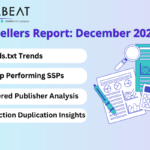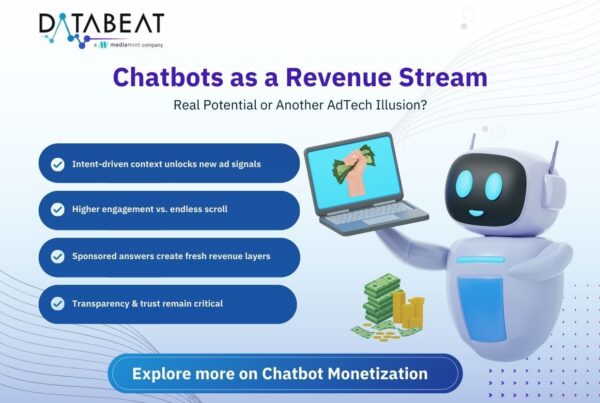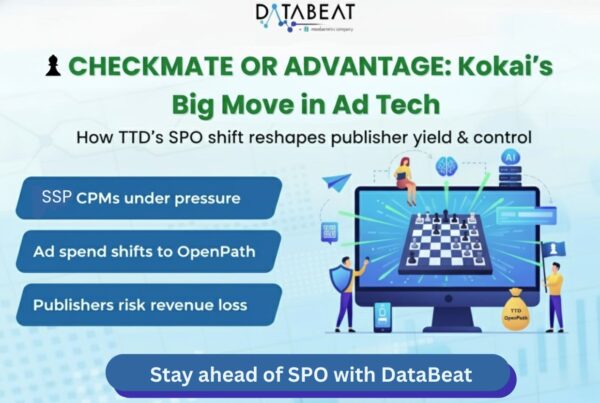
Navigating the Aftermath of Bankrupt Demand Partners
Recent bankruptcies of demand partners and agencies have created turmoil within the digital marketing sector, resulting in both time and financial burdens for companies as they navigate the aftermath. Swiftly re-evaluating their strategies and identifying alternative programmatic advertising platforms have become pivotal challenges.
Additionally, grappling with client retention and financial implications further complicates the situation, impacting not only supply-side platforms and Publishers but also the industry at large, which is undergoing significant changes as it adapts to the repercussions of such bankruptcies. Mediamath filing for Chapter 11 bankruptcy can be cited as a recent example.
What is bankruptcy?
Bankruptcy can be defined as a legal process that is triggered when an individual or a business becomes unable to repay their outstanding debts or responsibilities, providing a fresh beginning for those who can no longer manage their financial obligations. However, the creditors will still have an opportunity for repayment with the bankruptcy process.

Chapter 11 Bankruptcy
Many businesses opt for Chapter 11 bankruptcy as a means to restructure and sustain their operations. This type of bankruptcy provides a company with the chance to develop strategies for profitability, reduce expenses, and explore innovative avenues to boost revenue.
A company filing under Chapter 11 will receive assistance from the court in reorganizing its debts. The business is still open and running in the majority of cases. Many big firms have filed for Chapter 11 bankruptcy at one time or another as a means to stay afloat. A company may carry on with operations even while filing for Chapter 11. Typically, the “debtor in possession,” who is the debtor, conducts business as usual. Nonetheless, a court-appointed trustee will take over to manage the business during the bankruptcy process in situations involving fraud, dishonesty, or egregious incompetence.
After effects and how to deal with them:
Recently, Mediamath, which was one of the prominent DSPs in the industry, filed for Chapter 11 bankruptcy. In such a scenario, the ripple effect will be quite large across the industry. Be it publishers or SSPs, the financial burden will be hard to overlook. Payments to unsecured creditors are not guaranteed in a Chapter 11 bankruptcy proceeding, and the collections process could take years.
In MediaMath’s bankruptcy case, the filing includes a list of around 30 creditors, who have claims against the DSP. Unsurprisingly, Magnite and PubMatic are at the top of the list.
Other examples of companies that went bankrupt include iMedia, ENGINE Media Exchange (EMX), Sizmek etc.
iMedia Brands signed an Asset and Equity Purchase Agreement with RNN National Media Group in July,2023 after they faced financial adversities.
EMX was an SSP (now non functional) sparked rumors early this year regarding financial mismanagement, non-payments and so on which ultimately led to the company filing for bankruptcy in February, 2023.
Publishers:
- Publishers associated with partners which are going bankrupt means they are looking at reduced spend for their inventory.
- In the particular case of Mediamath, their bankruptcy resulted in a fragmented demand across multiple DSPs as clients and agencies looked forward for new programmatic advertising partners
- Publishers need to reassess their strategies to partner with new demand platforms within a short span of time in order to fulfill their contractual obligations.
- A strategy that can be taken by publishers to be immune to such a scenario would be to diversify their supply paths so as to include more supply and demand partners.
- Another factor which could impact publishers is the concept of sequential liability.
- Sequential liability means that an SSP is not responsible for making payments to the publisher if an upstream partner (like a DSP or an agency) does not pay for ad inventory purchased on the publisher site. So some SSPs could withdraw their payment to the publisher
Supply Side Platforms
- The SSPs most certainly will face a decrease in revenue as the need for advertising inventory will decline through their platforms.
- This might affect their fill rates and eventually the revenue they generate for the publishers. SSPs that have aligned their systems with an affected demand partner might find it necessary to allocate resources for the re-configuration of their platforms to accommodate different DSPs.
- This could mean new technical integrations and modifications to ensure a smooth connection with alternative DSPs, thereby ensuring an uninterrupted flow of programmatic transactions. This might mean coordination with publishers and other technology partners too.
- Long story short, the supply side gets crunched even more because of the failure of the demand side.
Brands and Advertisers:
The advertisers who used to rely on Mediamath have their task cut out for them as they would need to find new demand partners to advertise through. This might mean investing in new technical integrations, accommodating new strategies for campaigns, migrating the data. They need to prepare for a possible revenue decline at least for the immediate future.
How to move forward: If any of the DSP partners that an advertiser is dealing with faces bankruptcy, the immediate step would be to move the campaigns to another DSP for the time being and once the campaigns are live again, look for best solutions.
Signs to keep an eye out for:
In the current scenario where we witness increasing instances of partners going bankrupt, it goes without saying that publishers need to be better prepared. Even though no one can fully foresee the future, there could still be some signals that the publishers can pick on which might suggest a possible partner bankruptcy.
- Continued decreases in cash flow: Going bankrupt is not an overnight event. Partners face financial difficulties over a period of time that finally culminate in an extreme bankruptcy situation. So if you are starting to see increased financial issues including mistimed/skipped payments it could be a sign that something is not going well in the financial background.
- Lack of response from the Point of Contact: Proper streamlined communication is essential in any partnership. Normally companies facing financial difficulties and possible bankruptcy situations might reduce communication and your POC at their end might reduce/stop responding to your queries.
- Lack of innovation: To negotiate the changing trends in the industry and user behavior, it’s important to stay updated with cutting edge technologies. Now more than ever the need for technological update is essential for not just demand partners and SSPs but for the publishers as well. Failure to stay up-to-date might mean you have to face adverse consequences









